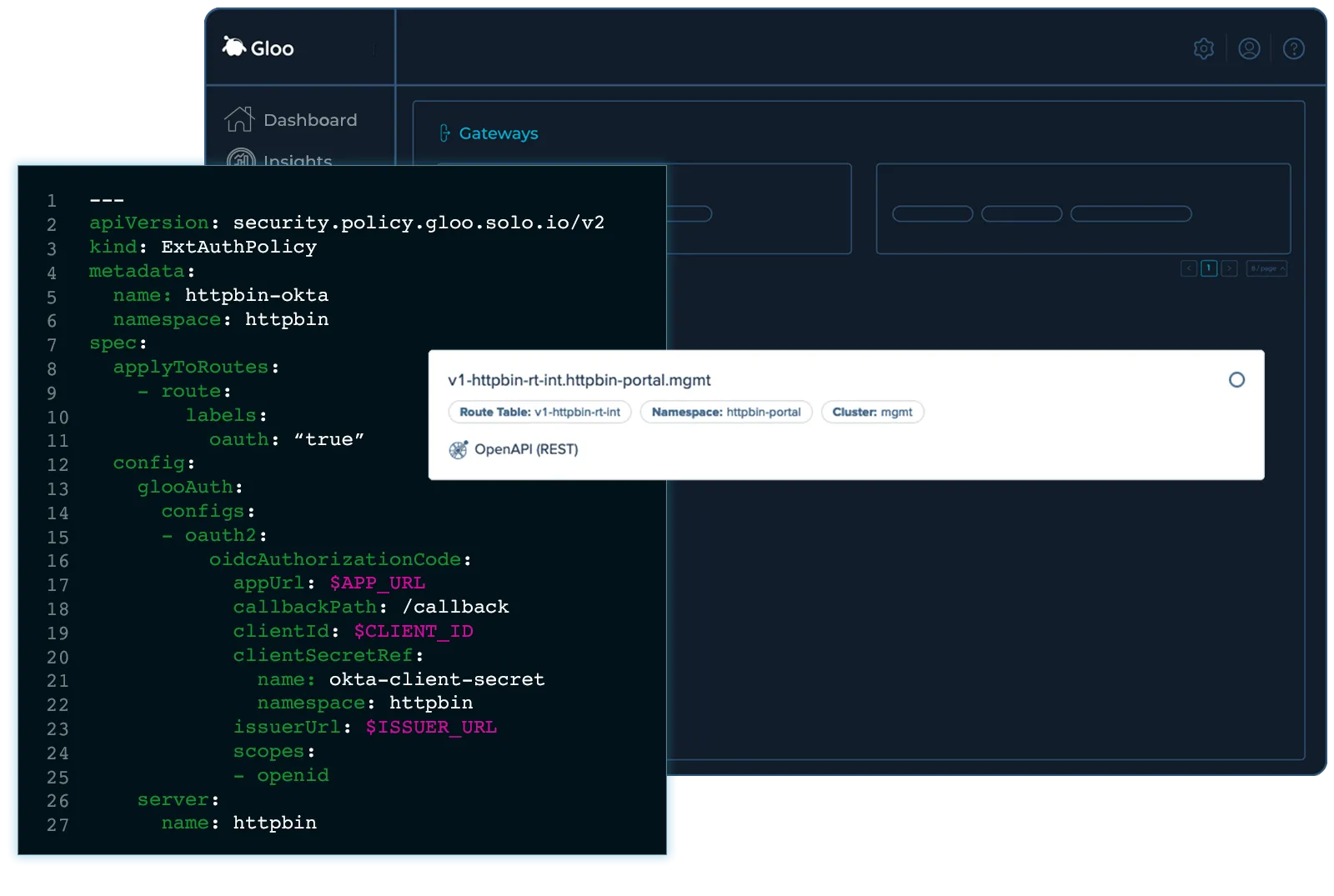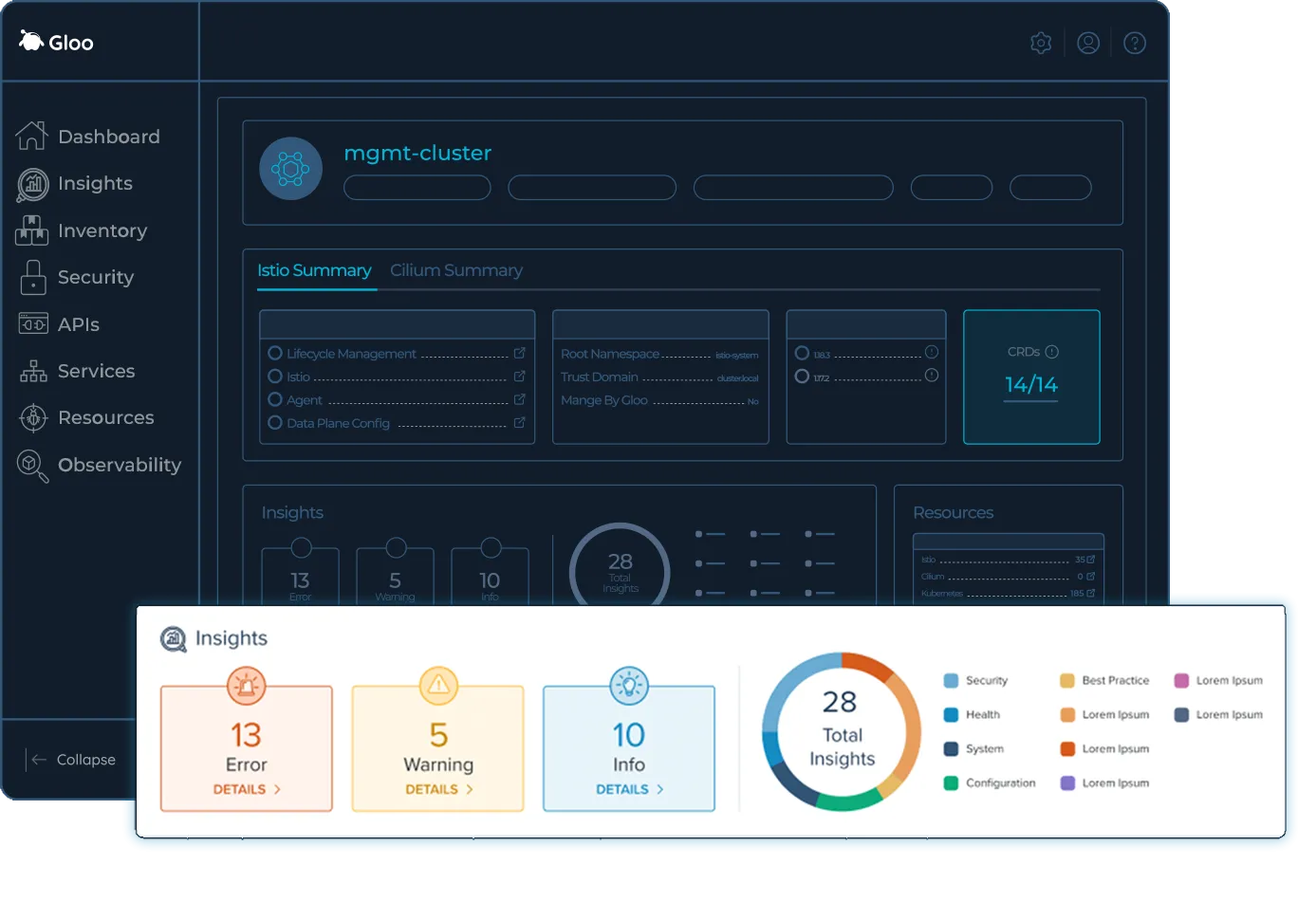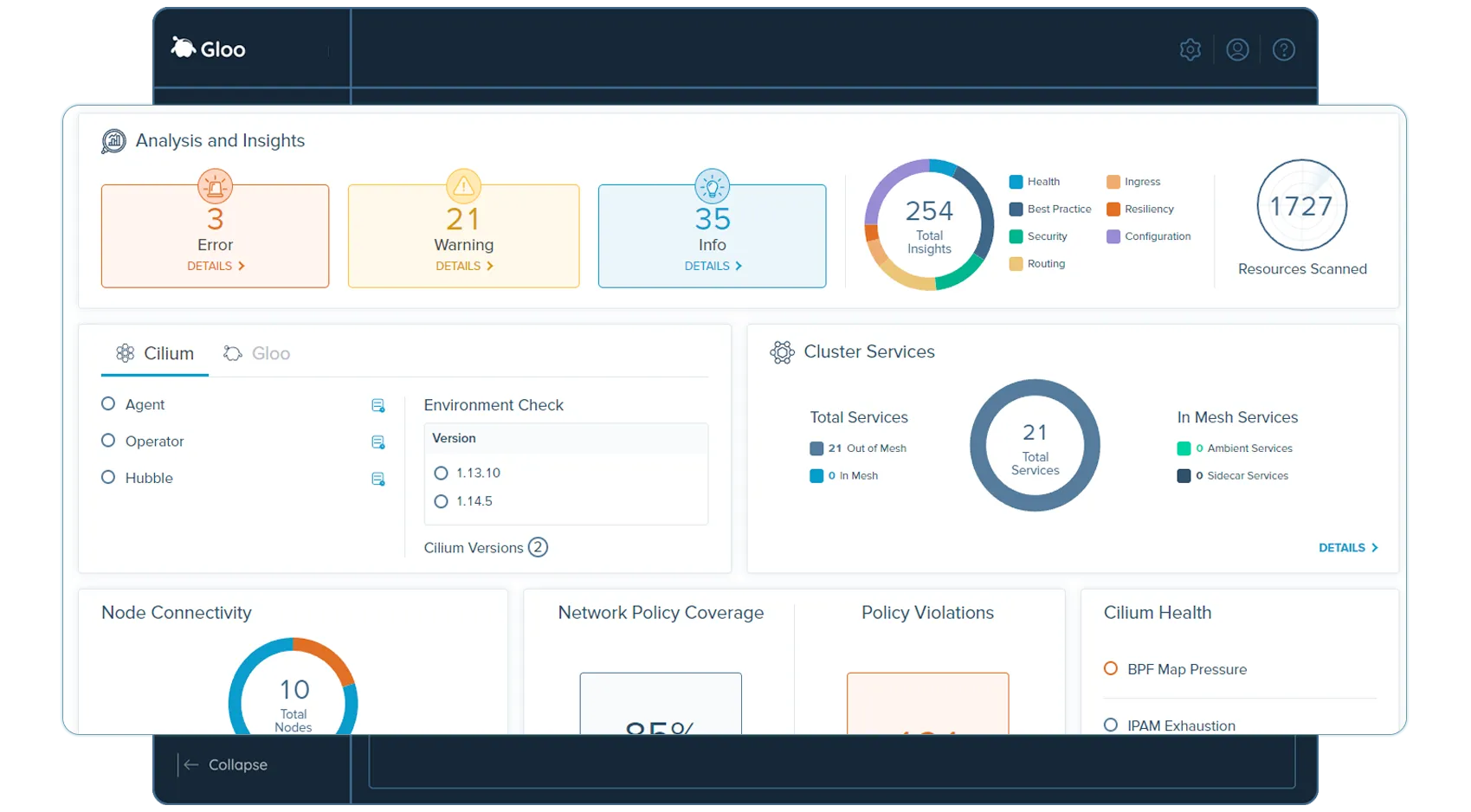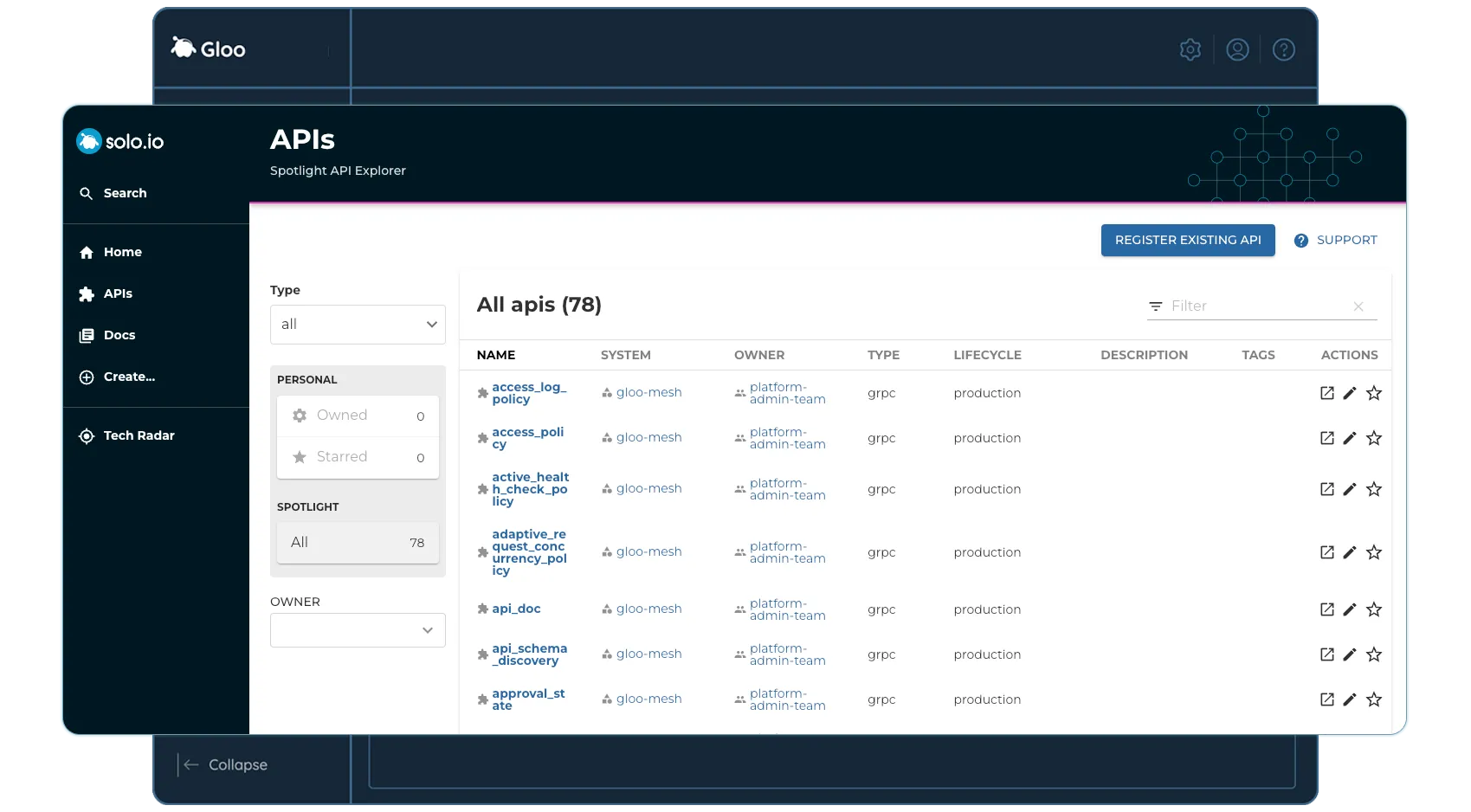Networking for Applications.
Not Infrastructure.
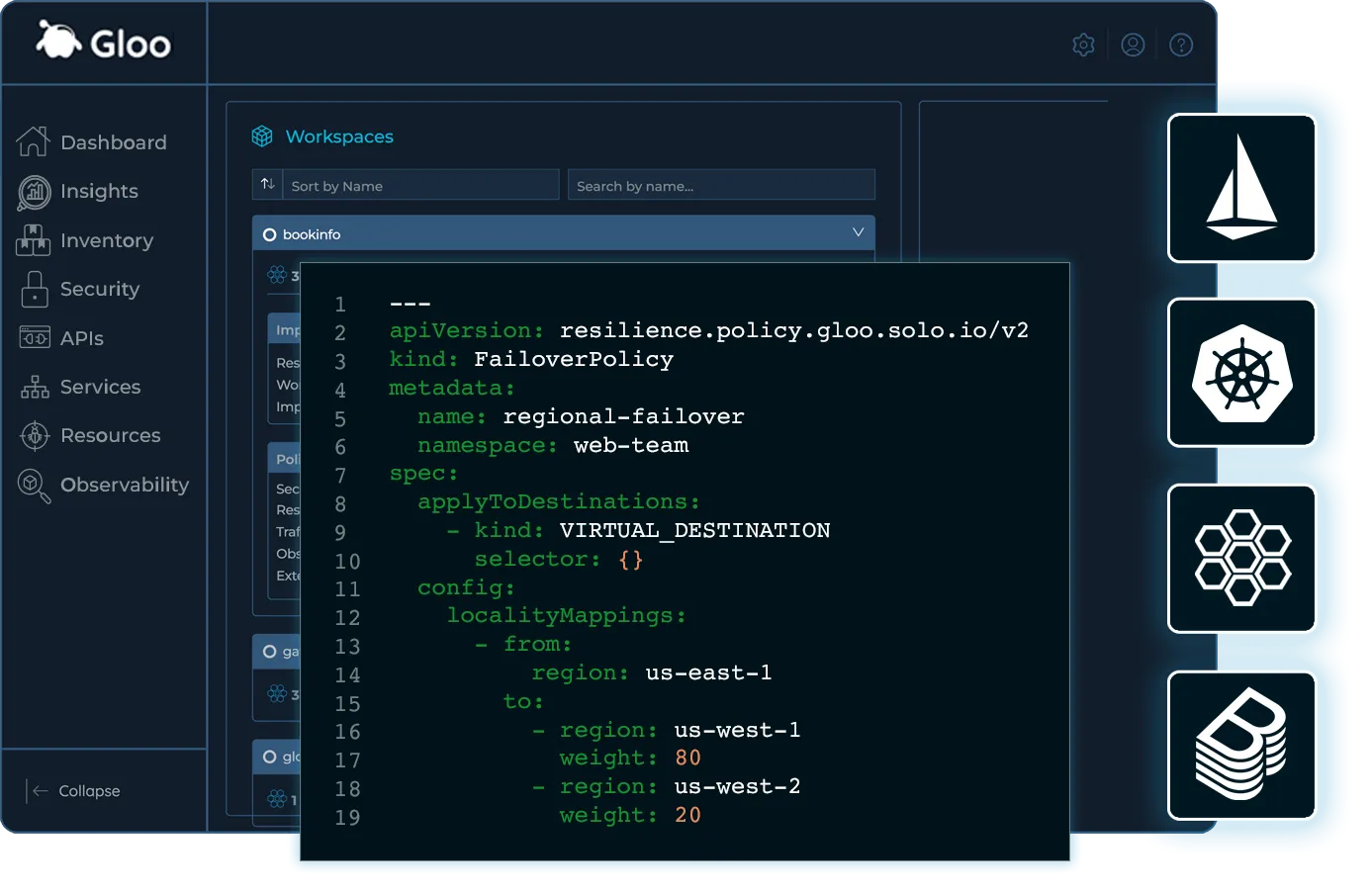
Solo.io is the leading provider of API gateway, service mesh, & CNI solutions
Solo.io develops innovative cloud-native solutions that enhance the speed and agility of enterprise application development. Our robust application networking platform – Gloo – enables the deployment of high performance, data-intensive workloads that foster the creation of outstanding digital experiences, including those powered by generative AI (genAI). With Gloo, you’re equipped to seamlessly and securely expand in a multi-cloud world, ensuring your applications not only keep pace with technological advancements but lead the way in innovation.
Organizations succeeding with Gloo
Our Products
Gloo Gateway
Gloo Gateway is a lightweight, highly scalable and secure Kubernetes-native gateway with powerful API management.

Gloo Mesh
Gloo Mesh provides robust, enterprise-grade Istio and Cilium support with multi-cluster insights and resilience to secure your service communications.

Gloo Network for Cilium
Simplifies the adoption of Cilium delivering high-performance networking and comprehensive observability.

Spotlight Developer Platform
Enterprise-Grade Backstage with Spotlight - a secure IDP featuring curated plugins, multi-cluster support, and a robust Insights engine.

Open Source
Community Leadership
Innovators, Leaders and Leading Contributors to the Istio, Envoy, Kubernetes, Cilium, GraphQL and Web Assembly projects. Defining the cloud-native architecture of the future.
Learn About Us






In addition to serving over 150 million transactions per day, T-Mobile increased developer efficiency.
Developers can now on board and start managing their services within a few minutes—versus days or weeks with previous gateway solutions.
